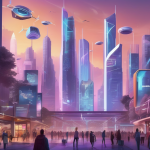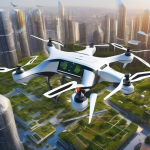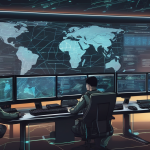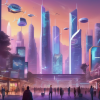AI in Television Production: The Next Big Thing?
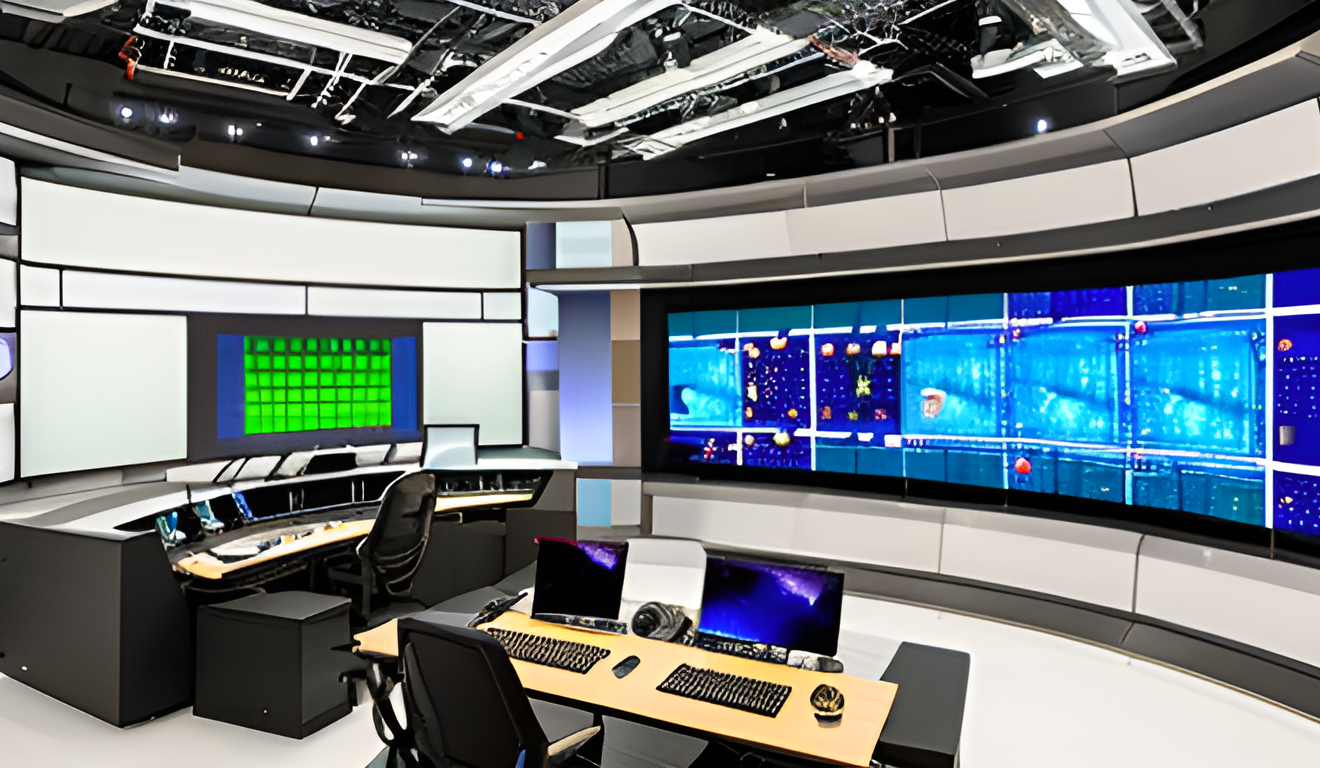
Artificial Intelligence (AI) is not just a buzzword; it’s a game changer for the television production industry. Imagine a world where creativity and technology intertwine seamlessly, enhancing the way stories are told and experienced. As we dive into the transformative impact of AI, it’s essential to recognize its multifaceted applications, from scriptwriting to post-production, and even audience engagement. The integration of AI in television production is akin to adding a new character to a show—one that brings fresh ideas, enhances existing narratives, and ultimately captivates viewers in ways we never thought possible.
The potential of AI is vast and varied. For instance, AI algorithms can analyze scripts, suggest improvements, and even predict which storylines might resonate with audiences. This not only saves time but also opens up a realm of creative possibilities. In post-production, AI-driven editing tools are revolutionizing the editing process, allowing editors to focus on the artistic aspects rather than getting bogged down by tedious tasks. It’s like having a supercharged assistant that can handle the heavy lifting while the creative minds can play with their ideas.
Moreover, AI is stepping into the realm of visual effects, where it automates complex processes, resulting in stunning visuals that leave audiences in awe. Think of it as having a magic wand that can instantly create breathtaking scenes, cutting down on production time and costs. This technology is also making waves in animation, automating character movements and generating realistic backgrounds, which allows animators to craft more dynamic and immersive experiences.
However, with great power comes great responsibility. The rise of AI in television production presents challenges, including ethical considerations and potential job displacement. As we embrace this technology, it’s crucial to navigate these waters carefully, ensuring that the human touch remains at the heart of storytelling. The future of AI in television is bright, and if we play our cards right, it could lead to a new golden age of creativity and innovation.
The Role of AI in Scriptwriting
Artificial Intelligence (AI) is not just a buzzword; it’s a game-changer in the realm of scriptwriting. Imagine sitting at your desk, coffee in hand, and instead of staring at a blank page, you have a smart assistant generating intriguing ideas and dialogues right before your eyes. That’s the magic of AI! It’s like having a brainstorming partner who never runs out of creativity.
AI tools today can analyze countless scripts from various genres and styles, learning what makes a story compelling. This technology can suggest plot twists, character developments, and even entire scenes, drastically reducing the time spent in the initial drafting phase. Writers can now focus more on enhancing their creativity rather than getting bogged down in the mechanics of writing.
For instance, consider how AI can help in the following ways:
- Idea Generation: AI can propose unique concepts based on trending themes or audience preferences, ensuring that writers are always ahead of the curve.
- Dialogue Crafting: With natural language processing, AI can generate realistic and engaging dialogues that resonate with the audience.
- Script Formatting: AI tools can automatically format scripts according to industry standards, saving writers precious time.
However, while the benefits are clear, the integration of AI into scriptwriting doesn’t come without its challenges. Writers may feel threatened by the idea of machines taking over creative processes. Yet, it’s essential to view AI as a collaborative tool rather than a replacement. After all, the heart of storytelling lies in human experience and emotion—elements that AI cannot replicate.
In conclusion, the role of AI in scriptwriting is transformative, offering a blend of efficiency and creativity that can elevate the writing process. As this technology continues to evolve, it opens up exciting possibilities for writers and filmmakers alike, propelling the industry into a new era of storytelling.
AI-Driven Editing Techniques
In the fast-paced world of television production, efficiency is the name of the game. Enter AI-driven editing techniques, which are revolutionizing how editors work. Imagine having an assistant that never tires, tirelessly sorting through hours of footage to find the best clips. This technology not only speeds up the editing process but also enhances the consistency of the final product.
One of the most exciting aspects of AI in editing is its ability to analyze footage and suggest edits based on established patterns. For instance, AI can identify the most engaging moments in a scene, helping editors to create a more captivating narrative. This allows them to focus on the creative aspects of storytelling, rather than getting bogged down in the mundane task of trimming clips.
Moreover, AI tools can automate repetitive tasks such as color correction and sound leveling. This means that editors can spend less time on technical adjustments and more time on crafting a compelling story. The result? A smoother workflow that not only boosts productivity but also fosters creativity. Imagine the possibilities when you can dedicate more time to perfecting your craft!
However, it’s essential to recognize that while AI is a powerful tool, it doesn’t replace the human touch. The emotional nuances and artistic decisions that make a production truly shine still rely on human editors. AI serves as a collaborative partner, enhancing the editing process rather than overshadowing it.
As we look to the future, the integration of AI in editing techniques promises to continually evolve. With advancements in machine learning and data analysis, we can expect even more sophisticated tools that will help shape the storytelling landscape. In the end, AI isn’t just about making things faster; it’s about opening new doors for creativity and innovation in television production.
Enhancing Visual Effects with AI
In the fast-paced world of television production, AI technologies are making waves by revolutionizing how visual effects are created. Imagine a world where the tedious hours spent on visual effects can be slashed dramatically, allowing for more creativity and less grunt work. With AI, this dream is becoming a reality!
AI algorithms can analyze vast amounts of data to automate complex processes, which not only speeds up production but also enhances the quality of the visuals. For instance, AI can seamlessly integrate CGI elements into live-action footage, creating stunning visuals that captivate audiences. This technology is akin to having a highly skilled assistant who never tires and can work around the clock, significantly reducing the time it takes to produce high-quality effects.
Moreover, the use of AI in visual effects opens up a new realm of possibilities for creators. By automating repetitive tasks, such as rotoscoping and compositing, artists can focus on the creative aspects of their work. This shift allows for more innovation and experimentation, as artists are no longer bogged down by mundane tasks. The result? A richer viewing experience for audiences who crave visually stunning content.
To illustrate the impact of AI on visual effects, consider the following table that highlights key benefits:
| Benefit | Description |
|---|---|
| Time Efficiency | AI reduces the time needed to create complex effects, speeding up production schedules. |
| Cost Reduction | By automating tasks, studios can lower costs associated with visual effects production. |
| Enhanced Creativity | Artists can focus on creative decisions rather than repetitive tasks, leading to innovative visuals. |
In conclusion, the integration of AI in visual effects is not just a trend; it’s a transformation that is reshaping the television industry. As technology continues to evolve, we can expect even more groundbreaking advancements that will further enhance the visual storytelling experience. So, buckle up and get ready for a future filled with mind-blowing visuals that only AI can deliver!
AI in Animation
In the vibrant world of animation, AI is making waves that are reshaping how stories are brought to life. Imagine a tool that can automate character movements and generate realistic backgrounds with just a few clicks. Sounds like magic, right? But it’s not; it’s the power of artificial intelligence at work. With AI, animators can focus on the creative aspects of their projects instead of getting bogged down in tedious tasks. This not only speeds up the production process but also opens up new avenues for creativity.
One of the most exciting developments is the use of AI to create dynamic and immersive experiences. For instance, AI algorithms can analyze existing animations and learn from them, allowing for the creation of more fluid and lifelike movements. This means that animators can produce content that captivates audiences, drawing them into the story like never before. Just think of it as having a super-smart assistant who knows exactly how to make your characters come alive.
Additionally, AI can assist in generating backgrounds that are not only visually stunning but also contextually relevant to the storyline. By understanding the emotional tone and pacing of a scene, AI can suggest or create backgrounds that enhance the narrative, making the entire viewing experience more engaging. This capability can significantly reduce the time spent on background art, allowing animators to allocate their resources more efficiently.
However, the integration of AI in animation is not without its challenges. While it offers incredible potential, there are questions about authenticity and the role of the human touch in creative processes. As we embrace these technologies, it’s crucial to find a balance that honors the artistry of animation while leveraging AI’s capabilities. The future of animation is bright, and with AI on our side, we can expect to see even more breathtaking creations that push the boundaries of imagination.
Real-time Rendering and AI
Imagine being able to see your creative vision come to life in real-time! AI is making this dream a reality in television production through advancements in real-time rendering technology. This innovative approach allows creators to visualize their work as it develops, enabling instant adjustments and enhancements. Gone are the days of waiting hours or even days to see how a scene looks; now, it’s all about immediate feedback and collaboration.
With AI-driven tools, artists can manipulate and refine their visuals on the fly. This means that whether you’re working on a gripping drama or a whimsical animated series, you can tweak lighting, textures, and character movements in real-time. This not only speeds up the production process but also fosters a more dynamic and interactive environment among the team. Everyone can contribute their ideas and see the changes unfold instantly, leading to a more cohesive final product.
Moreover, real-time rendering powered by AI can significantly reduce costs. Traditional rendering processes are often time-consuming and resource-intensive, requiring powerful hardware and extensive manpower. By leveraging AI, studios can streamline these processes, allowing for quicker turnarounds and more efficient use of resources. As a result, production teams can allocate their budgets more effectively, investing in other creative aspects of their projects.
To illustrate the impact of real-time rendering, consider the following benefits:
- Enhanced Collaboration: Teams can work together more effectively, making adjustments in real-time.
- Increased Efficiency: Speeding up the rendering process means faster project completion.
- Cost Reduction: Less time spent on rendering translates to lower production costs.
As we look to the future, the integration of AI in real-time rendering will undoubtedly pave the way for more innovative storytelling techniques. The possibilities are endless, and the excitement surrounding this technology is palpable. Are you ready to embrace this new era of television production?
AI for Audience Analysis
In the ever-evolving world of television production, understanding your audience is key to creating content that resonates. Artificial Intelligence (AI) is stepping into this crucial role, transforming how producers analyze viewer preferences and behaviors. Imagine having a crystal ball that not only predicts what your audience wants to watch but also adapts content to meet those desires in real-time. Sounds incredible, right? That’s the magic of AI!
AI tools can sift through vast amounts of data, identifying patterns and trends that might take humans ages to uncover. By analyzing factors such as viewing habits, social media interactions, and demographic information, AI provides valuable insights that help producers tailor their content. For instance, if a particular genre is gaining traction among younger audiences, AI can alert producers to shift their focus to that genre, ensuring they stay relevant and engaging.
Moreover, AI doesn’t just stop at analysis; it also enhances viewer engagement. By utilizing algorithms that predict what viewers might like based on their past behavior, AI can suggest personalized content, creating a more immersive viewing experience. This level of customization is akin to having a personal concierge for your entertainment, guiding you to shows and movies that you’ll love.
| Benefits of AI in Audience Analysis | Details |
|---|---|
| Enhanced Viewer Engagement | AI-driven recommendations keep audiences hooked by suggesting content tailored to their tastes. |
| Data-Driven Decisions | Producers can make informed choices about content direction based on comprehensive audience insights. |
| Real-Time Feedback | AI tools allow for immediate adjustment of strategies based on current viewer reactions and trends. |
As we look to the future, the role of AI in audience analysis will only grow more significant. With its ability to adapt and evolve alongside viewer preferences, AI is not just a tool; it’s becoming an essential partner in the creative process. So, the next time you enjoy your favorite show, remember that AI might just be behind the scenes, making sure you get the content you crave!
Challenges of Implementing AI in Production
As exciting as the integration of AI into television production may seem, it comes with its own set of challenges that can’t be ignored. One major hurdle is the ethical concerns surrounding AI’s role in creativity. When AI systems generate scripts or make editing decisions, questions arise about authorship and originality. Who gets the credit for a story crafted by an algorithm? This dilemma prompts a deeper discussion about the boundaries of what AI can and should create, leading to potential conflicts over intellectual property rights.
Another pressing issue is the risk of job displacement. With AI taking over routine tasks, there’s a genuine fear that certain roles within the production process could become obsolete. For instance, while AI can efficiently edit footage or generate visual effects, it might mean fewer opportunities for human editors and artists. This shift necessitates a transformation in workforce skills, as professionals will need to adapt and learn how to work alongside AI tools rather than be replaced by them.
Furthermore, the successful implementation of AI technologies demands a workforce that is not only skilled in traditional production roles but also well-versed in AI management. This presents a significant challenge for production companies, as they must invest in training and education to ensure their teams can effectively harness the potential of AI. Without this investment, the gap between AI capabilities and human skill sets could widen, resulting in inefficiencies and missed opportunities.
In summary, while AI holds the promise of revolutionizing television production, it’s crucial to address these challenges head-on. By navigating the ethical landscape, preparing for workforce changes, and investing in skill development, the industry can better position itself to embrace the future of AI. The journey may be complex, but the potential rewards are substantial.
Ethical Considerations
As we embrace the incredible potential of artificial intelligence in television production, we must also confront a myriad of ethical dilemmas that arise from its integration. One of the most pressing issues is the question of authorship. When AI generates scripts, dialogues, or even entire episodes, who truly owns the creative work? Is it the programmer, the AI itself, or the original creators who provided the data? This ambiguity challenges our traditional notions of creativity and ownership, leading to significant discussions within the industry.
Moreover, the use of AI raises concerns about originality. If a machine can replicate styles and generate content based on existing works, does this diminish the value of human creativity? The line between inspiration and imitation becomes increasingly blurred, prompting us to reevaluate what it means to be an artist in the age of technology.
Another critical aspect to consider is the potential for bias in AI algorithms. If the data fed into these systems reflects societal biases, the output may inadvertently perpetuate stereotypes or exclude diverse perspectives. This could lead to a homogenized viewing experience that fails to represent the rich tapestry of human culture. Therefore, it is essential to ensure that AI systems are trained on diverse datasets to promote inclusivity.
Lastly, as AI takes over more creative roles, we must address the impact on employment. While AI can enhance productivity, it may also render certain positions obsolete, leading to job displacement. This necessitates a proactive approach to reskill and upskill the workforce, ensuring that human creativity remains at the forefront of the industry.
In summary, while AI offers exciting advancements in television production, it is crucial to navigate these ethical considerations thoughtfully. By fostering open discussions and implementing fair practices, we can harness the power of AI while preserving the integrity of human creativity in the industry.
Job Displacement Risks
The rise of AI in television production is not just a technological marvel; it also brings with it a wave of concerns regarding job displacement. As machines become increasingly capable of performing tasks traditionally handled by humans, many in the industry are left wondering: will their jobs be safe? It’s a valid concern, especially as AI tools continue to evolve and take on more complex roles.
For instance, AI can automate various aspects of production, such as scriptwriting, editing, and even visual effects. While this enhances efficiency and reduces costs, it also means that some positions may become redundant. The roles most at risk are often those that involve repetitive tasks, which AI can perform faster and more accurately. This shift could lead to significant changes in the job landscape, prompting a need for professionals to adapt and evolve their skills.
Moreover, the emergence of AI raises questions about the future of creative roles. Will writers, editors, and animators find their creativity stifled by machines? Or will they instead find new opportunities to collaborate with AI, using it as a tool to enhance their artistic vision? The answer may lie in how the industry chooses to integrate these technologies.
To mitigate the risks of job displacement, industry stakeholders may need to consider several strategies:
- Upskilling and Reskilling: Offering training programs to help current employees learn how to work alongside AI tools.
- Creating New Roles: Developing positions that focus on managing and overseeing AI technologies.
- Emphasizing Human Creativity: Highlighting the importance of human input in creative processes that AI cannot replicate.
Ultimately, while AI presents challenges, it also offers an opportunity for growth and innovation. By embracing change and adapting to new technologies, the television industry can navigate the potential pitfalls of job displacement, ensuring that human creativity remains at the forefront of production.
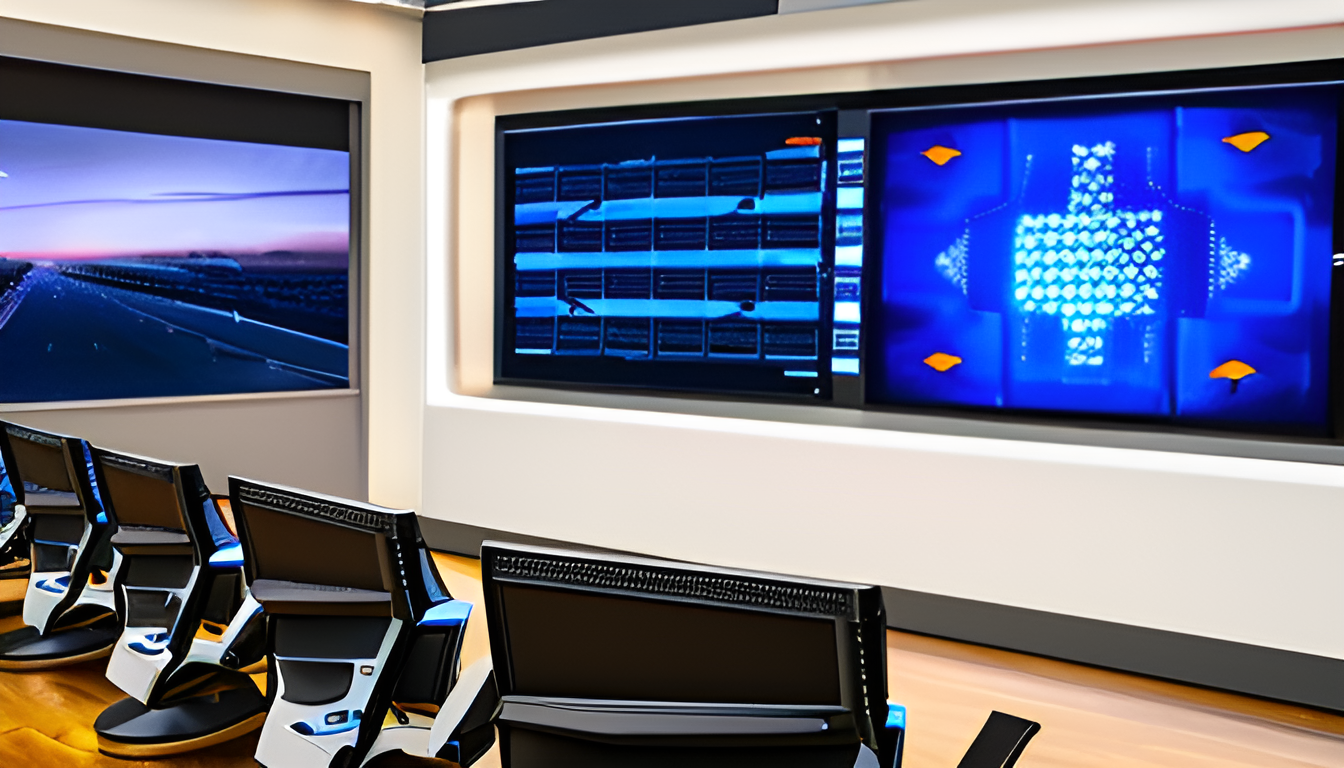
The Future of AI in Television
The future of AI in television production is not just bright; it’s practically glowing with potential! As technology continues to evolve at lightning speed, we can expect AI to play an even more significant role in shaping the way we create and consume content. Imagine a world where your favorite shows are tailored specifically to your tastes, all thanks to the magic of artificial intelligence. Sounds exciting, right?
One of the most promising aspects of AI’s future in television is its ability to enhance creativity. With advanced algorithms, AI can analyze vast amounts of data, identifying trends and preferences that might go unnoticed by human eyes. This means producers can craft stories that resonate more deeply with audiences. For instance, AI can suggest plot twists or character development paths that align with what viewers are currently loving. It’s like having a personal assistant who knows exactly what you want!
Moreover, as we look ahead, real-time content creation is set to revolutionize the industry. Imagine being able to adjust a scene or dialogue while filming is still in progress! AI can facilitate this by providing instant feedback and suggestions, allowing creators to make informed decisions on the fly. This not only enhances collaboration but also speeds up the production process, making it more efficient than ever.
However, with great power comes great responsibility. As we embrace these advancements, we must also navigate the ethical landscape that accompanies them. Questions about authorship, originality, and the potential for job displacement are at the forefront of discussions in the industry. It’s crucial for stakeholders to address these challenges to ensure that AI serves as a tool for enhancement rather than a replacement.
In conclusion, the integration of AI into television production is poised to reshape the industry dramatically. By enhancing creativity, streamlining processes, and improving audience engagement, AI will not only transform how we produce content but also how we experience it. The television of tomorrow may just be a reflection of our deepest desires, all thanks to the remarkable capabilities of artificial intelligence.
Frequently Asked Questions
- How is AI changing scriptwriting in television?
AI is revolutionizing scriptwriting by generating ideas, dialogues, and even entire scripts. This allows writers to enhance their creativity and streamline the writing process, making it faster and more efficient.
- What are the benefits of AI-driven editing techniques?
AI-driven editing tools improve efficiency and consistency in post-production. They enable editors to focus on creative decisions instead of repetitive tasks, thus speeding up the editing process and enhancing the overall quality of the final product.
- Can AI enhance visual effects in television shows?
Absolutely! AI technologies automate complex processes in visual effects, resulting in stunning visuals that captivate audiences while also reducing production time and costs. It’s like having a supercharged creative partner!
- What challenges does AI face in television production?
While AI brings many benefits, it also poses challenges such as ethical concerns regarding authorship and originality, job displacement risks, and the need for skilled personnel to manage AI tools effectively.
- How does AI help in audience analysis?
AI analyzes viewer preferences and behaviors, helping producers tailor content to meet audience demands. This can significantly improve engagement and satisfaction across various demographics.
- What does the future hold for AI in television production?
The future of AI in television looks bright! Ongoing advancements are expected to enhance creativity, efficiency, and viewer engagement, ultimately reshaping the industry landscape.

